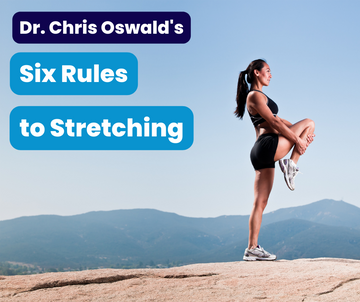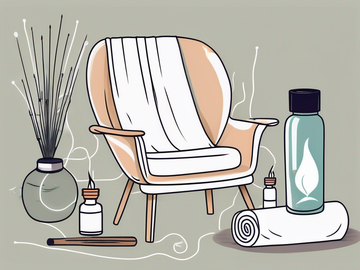

Dr. Chris Oswald is not only the creator and CEO of MuscleCare, but he is also a chiropractic doctor of 34 years and bestselling author of his stretching book, Stretching for Fitness, Health, and Performance.
In his book, he includes his Six Rules to Stretching. These rules are also the advice that he gives to his patients in his clinic in Downtown Toronto.

1. Warm up
Before you stretch, your muscles should be warm. An efficient warm-up can include marching, walking in place while swinging your arms, taking a warm shower, or mimicking the sport you are about to do (e.g., for squash: swing the racquet, twist the torso, and lunge). The warmup increases the muscle temperature, which increases blood flow to the tissue. The muscle fibers can then
respond more quickly and efficiently to the stretch.
From a practical perspective, doing the Daily Stretch Routine in the shower is the best time to do your stretches. It is easy to remember, becomes part of a habit, and therefore is something that you can see immediate results from.
2. Be Gentle
Do not force a muscle to stretch. All you should feel is a gentle pull in the muscle. It should take approximately 6-10 seconds for the internal muscle-protective mechanism to adapt to the new position. Then the nervous system will allow the muscle fibers to relax and change their length. In the next 20-24 seconds, you should notice a gradual decrease in the pulling sensation. At the end of 30 seconds, you should feel almost no pulling sensation. If you still feel something, you are stretching too far, which can result in a sore and stiff muscle. Simply ease back to the point or position where you feel virtually nothing in order to allow the muscle to adapt to its new length. The "no pain, no gain" theory does not apply to stretching.
3. Hold for 30 Seconds
Current research shows that a stretch must be held for at least 30 seconds. If you cannot hold the stretch comfortably for this long, then ease back. Anything less than 30 seconds will not give the nerves enough tune to adapt to the new length and alter the muscle tone. Only one repetition per muscle is required when done daily. However, if you notice that a muscle on one side is tighter than the same muscle on the other side, you may want to stretch it 2-4 times to fully relax it. Ultimately, you want symmetry.

4. Breathe
Deep, rhythmic, abdominal breathing helps to improve circulation to muscle tissues. This enhances nutrient flow (especially calcium and magnesium) to muscle fibers. Breathing also is meditative and helps you relax. Holding your breath will make the stretch ineffective.
5. Do Not Bounce
Deep, rhythmic, abdominal breathing helps to improve circulation to muscle tissues. This enhances nutrient flow (especially calcium and magnesium) to muscle fibers. Breathing also is meditative and helps you relax. Holding your breath will make the stretch ineffective.
6. Stretch Both Sides
Always stretch the right and left sides (or the front and back) of an area to maintain balance and symmetry. This will enhance flexibility and performance while reducing the risk of injury. Pay attention to your muscles. If the muscle you stretch responds quickly, you can assume it is healthy and does not require much work. If it is stiff and does not move easily, you may need to repeat the stretch until it relaxes. Learn to "listen" to the muscle's response to the stretch so that you will learn more about your inherent blueprint.
Pro tip: Apply MuscleCare before and after stretching to relieve pain and prevent injuries.

Want more wellness advice from Dr. Chris Oswald? Download his app - Dr. Chris Club! It's FREE and available in both the Apple App Store and Google Play Store.





